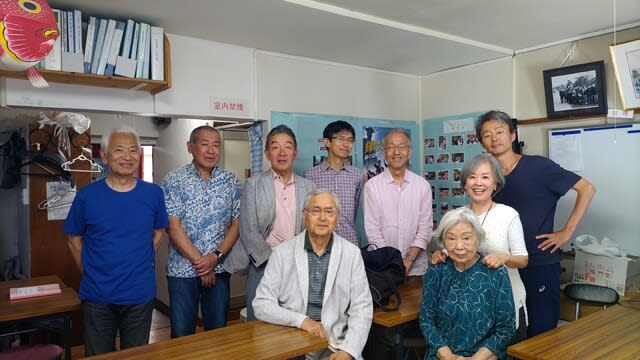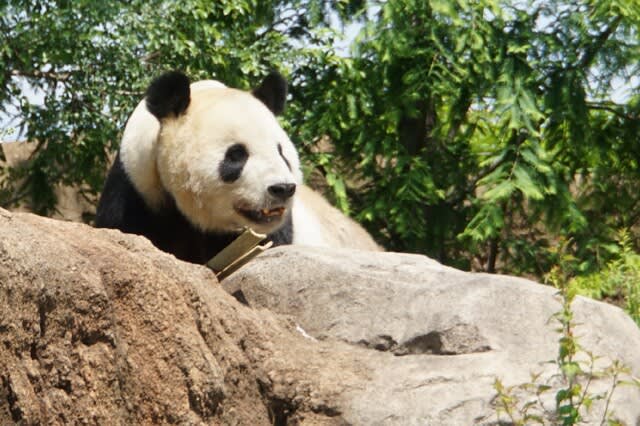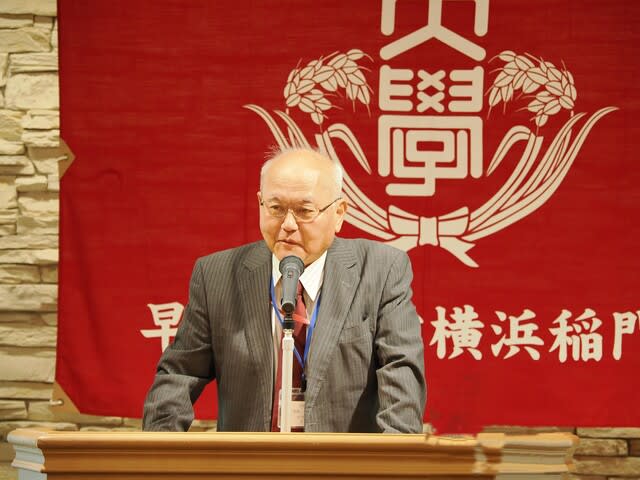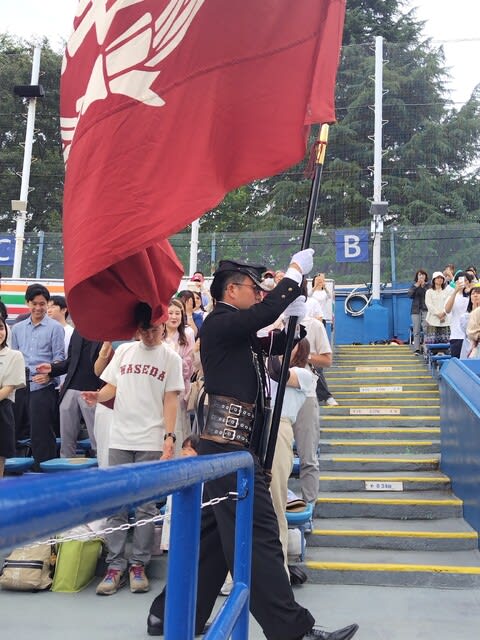今月の英語で話そう会のテーマは先月の「文化の相違について」に続き「あなたの誇れる文化」について話しました。以下出てきたものを簡単にご紹介します。賛同できるものもあるのではないでしょうか。
「お寿司」日本の代表食文化といえる寿司は旬の魚を味わえる(季節を感じられる)美味しい文化。生ものを扱うだけに清潔でないとならず、カウンターから見える厨房はきれいなところがほとんど。
「日本人の好奇心が強いところ」これにより日本の発展があったと思う。グローバルコミュニティの一員として今あるのはこのおかげかも。他者の話に耳を傾け仲間とともに何かを築き上げていけるのはこの好奇心がもとになっていると思う。
「公共交通機関の時刻表に忠実なところ」これは安全に正確に人が移動するためにとても大事なこと。日本人の几帳面さがでている。
「ドラッグストアがあちこちにある」薬品だけでなく、日用品も扱っていて便利である。しかも営業時間も長め。これで助かることがたくさんある。欧州で土日は店が完全に閉まってしまうのと対比的。
「色々な場面で列に並べる」国によっては出入口や受付に規制がなく人が殺到するところもあるが、並ぶことでより効率的に素早く行えることも多い。この習慣があるおかげで災害時も暴動等がおきづらいのでは。
「おもてなし精神」日本はチップが無くても丁寧で親切なサービスを受けられる。食べ物のサンプルがあったり、メニューに写真がのっているのもおもてなしの一例ではないだろうか。
「早稲田の多様性」昔から早稲田の学生はとにかく色々な人がいてその振れ幅が広かった。昨今社会で多様性が言われているが早稲田はそれを先取りしていたと思う。
「茶道」茶道は芸術性、哲学性などを含んだ平和的な日本の作法である。道という日本独特の精神性もここにあるのではないか。特攻隊として出陣した裏千家の前家元は仲間の特攻隊員にお茶をたててふるまっていたそうだ。
「花火」江戸時代から続き、発展してきた日本の花火は色や大きさなど素晴らしく、最近では非対称のものもある。国内が安定していない国の人には花火の音が爆発音に聞こえることもあることから花火があげられる日本の平和な現状も誇れるものではないか。
「ボトムアップの決定方式」日本の社会は比較的現場からの声を取り入れての意思形成が多いが、トップダウンの国もある。仕事の内容や状況をよくわかっているのは現場なのでそこから上げていけるのは建設的。上が一方的に意思決定をしてしまうと後から綻びがでてくることがあるように思う。
「日本語」カタカナ、ひらがな、漢字があるが、幼少期にはひらがなから習い、難しい漢字もふりがなをふり読めるように工夫している。さらに表意文字も表音文字もあり、素敵な言葉だと思う。
 The theme of this month's English conversation meeting was “Which part of your culture are you most proud of, and why?“
The theme of this month's English conversation meeting was “Which part of your culture are you most proud of, and why?“
The followings are the things that came up during the meeting. Would you agree?
Sushi: Sushi is a representative of Japanese food (culture). You can taste seasonal fish which makes you recognize and appreciate the season. Because most of the material is raw, it must be handled carefully and restaurants’ kitchen is usually very clean.
Japanese curiosity: I think this is the reason for Japanese development. It is this curiosity that allows us to listen to what others have to say and to build new things as a team.
Punctuality of Japanese transportation: Japanese transportations are on time, which helps people travel safely and accurately. It shows the meticulousness of Japanese people.
Drugstores: The stores are conveniently placed in many areas. Stores will have not only drugs, but also household goods from shampoo to alcohol. Moreover, they are open for long hours and helps people around the location. This is different from European countries where the shops are closed on weekends.
Queueing: In some countries, people rush to the entrances, exits, and reception areas, however, it is quicker and efficient to line up in most cases. This may be the reason why riots are less likely to happen during disasters in Japan.
Omotenashi Spirit: In Japan, you can receive courteous and friendly service even without tips. Food samples and pictures on menus are good examples of Omotenashi.
Waseda's diversity: Waseda have always had a wide variety of students and their background. There were diligent serious students, and on the other hand, playful students who did not even go to University. Diversity has been talked about more and more in recent years, but I think Waseda was ahead of the curve.
Tea ceremony: This is a peaceful Japanese art form that includes artistic and philosophical aspects. I believe this is where unique Japanese spirituality of the “Dou(道)” lies. The former leader of Urasenke tea ceremony branch who was a member of suicide attack, served tea to his fellow suicide pilots to provide them mental stability.
Fireworks: Japanese fireworks widely developed during the Edo period, are wonderful in terms of color and size. Recently there are asymmetrical fireworks shaped like smiley face, and Kitty-chan. People from unstable countries sometimes hear the sound of fireworks as explosions. Japan's peaceful situation where people could enjoy fireworks may be considered something to be proud of.
Bottom-up decision making: While Japanese society is relatively receptive to feedback from the frontline, some countries have a top-down approach. It is harmonious process as the decision-making process is top-down. Since it is the front-line workers who have a good understanding of the work and the situation, it is good to be able to raise the bar from there. If the top management makes decisions unilaterally, there may be a breakdown later on.
The Japanese language has katakana, hiragana, and kanji, but children learn hiragana first, and even difficult kanji are written with furigana so that they can be read. In addition, there are both ideograms and phonograms, and I think it is a wonderful language.
(報告:世話人・鈴木)


































 The theme of this month's English conversation meeting was “Which part of your culture are you most proud of, and why?“
The theme of this month's English conversation meeting was “Which part of your culture are you most proud of, and why?“


















